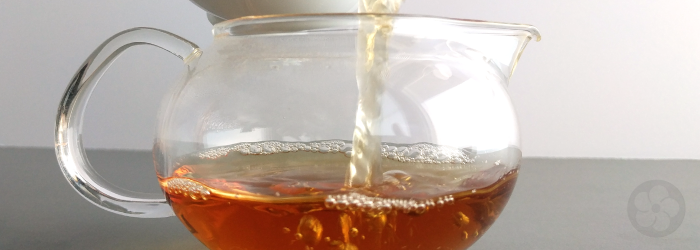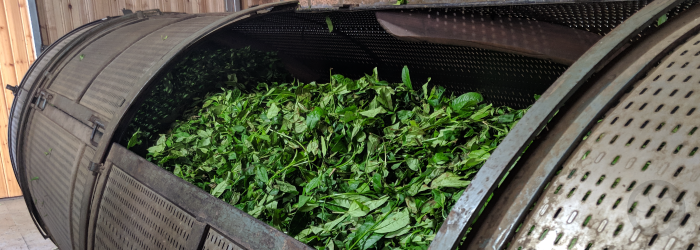What is Hojicha?

Though Japan is primarily known for producing green teas like matcha, there are many Japanese teas that are less commonly exported. The broad category of roasted teas called hojicha is particularly popular in Japan as a pairing for heavier meals, or as an alternative during the winter season when green teas are out of season.
Find out how Japanese green teas differ from Chinese green teas >>
Despite bearing some resemblance in color and flavor to roasted Chinese styles, hojicha is actually crafted from fully finished green teas, a distinct difference in processing that produces unique flavor. Roasted teas made in China most often fall into the oolong category: bruised and oxidized until the leaf is partially browned before roasting. This oxidation process enriches flavors and brings forth natural sweetness before the leaves are heated in a wok or rotating drum to halt this enzymatic reaction.
In contrast, hojicha teas are made from traditional Japanese green styles, which are categorized by harvest date. Most hojicha is crafted from a base of bancha, or ‘common tea’ - the late harvest leaves that are generally considered least valuable in green tea form. Some hojicha may also be made with earlier harvests, called sencha, or with tea made up of twigs, called kukicha. No matter which base tea is used, it is first steamed, halting oxidation before it begins and preserving the green color of the fresh leaves.
Learn how oxidation changes tea flavor >>
Hojicha is roasted only after this first crafting process is complete. It is a relatively recent invention, first developed in Kyoto in the early 20th century and made with charcoal roasting techniques. Probably, it was first created in an effort to make low-grade green teas more flavorful or extend the shelf life of stored teas. Today, the secondary roast is believed to lower caffeine levels, so hojicha is often touted as a good choice for evening drinking.
Because it is made from a wide variety of base teas, the quality and flavor of hojicha is also highly variable. As with any tea, later harvest leaves (or stems) will be more likely to deliver astringency and bitterness in the cup, so it is important to distinguish whether hojicha is made from sencha, bancha, or kukicha.
Find out why harvest dates are so important for green tea quality >>
Without oxidation, Japanese teas generally retain more umami flavor, but also lack the rich depth of flavor commonly found in roasted Chinese oolong teas. For us, teas like our Monkey Picked Tieguanyin, Double Roast provide the perfect compromise, with moderate oxidation to preserve floral aromatics and draw forth natural sweetness, plus two gentle roasts to lend top notes of toasted nuts and burnt caramel. For a richer brew, we opt for more oxidation and traditional charcoal roasting in teas like our Heritage Grand Scarlet Robe.
What is your favorite type of roasted tea? Let us know what you think in the comments below!
Sign up for our newsletter to get blog updates in your inbox!





Comments on this post (0)